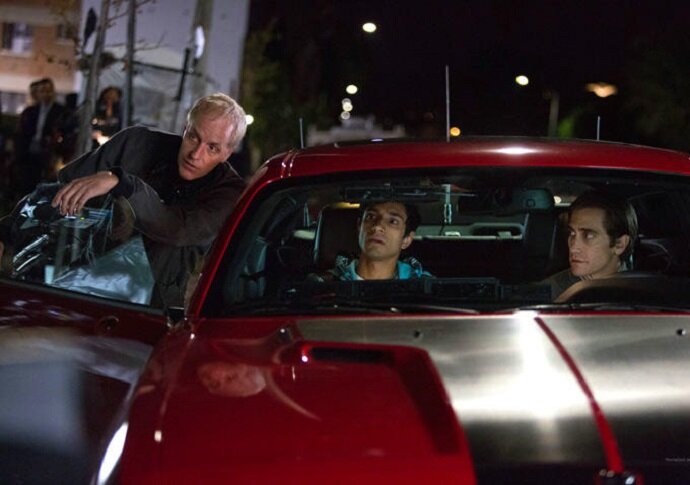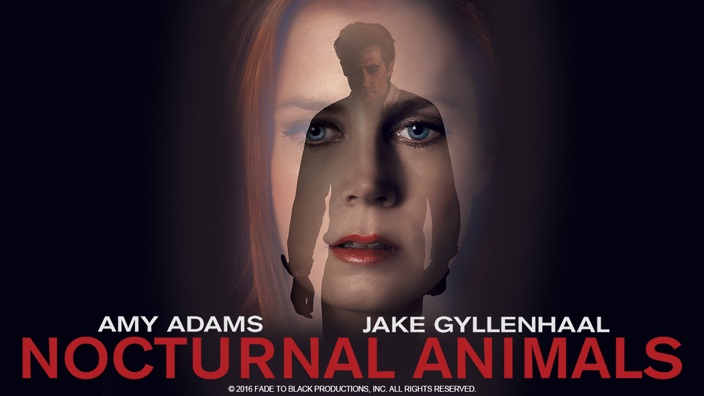The trailer for Jordan Peele’s next movie, Us, is… for the lack of a better word, really freaky. So good, it just makes us reminisce on how awesome Get Out was. The directorial debut that knocks it out of the park is rare and often hard to forget. This year, it was Bradley Cooper with A Star Is Born (2018). We take a look back at some directors who introduced themselves to the world in a big way.
1. Get Out (Jordan Peele)
We’ve already mentioned it, so let’s jump straight into it. Before he took his turn on the director’s chair, Jordan Peele was primarily known for his comedic sketches with Keegan-Michael Key on Key & Peele. After the success of Get Out, he’s producing films like BlacKkKlansman and Candyman, as well as presenting the reboot of The Twilight Zone.

Part-satire and part-social commentary, Get Out is a uniquely modern work that addresses racism faced by the black community on a daily basis, while delivering punchlines and scares at a rapid-fire rate. It’s a massively entertaining film that has important things to say, namely how even liberal attitudes has prejudices, and how these thoughts, such as the “advantage of being black”, can cause life to be so difficult for black people, even if unintentional.
Get Out would go on to achieve both critical and commercial success, with “sunken place” memes going on to dominate the first half of 2017, while also bagging the Best Original Screenplay Award at that year’s Academy Awards.
2. Fruitvale Station (Ryan Coogler)
A native of Oakland, California, Ryan Coogler was still a student at the University of Southern California School of Cinematic Arts when Oscar Grant was shot on January 1, 2009. After learning of the news, he expressed his desire to make a film about Grant's last day:
"I wanted the audience to get to know this guy, to get attached, so that when the situation that happens to him happens, it's not just like you read it in the paper, you know what I mean? When you know somebody as a human being, you know that life means something."

Coogler’s intention to give Oscar Grant’s story more than just the over-dramatised telling of his death comes through in his restraint in the film. It’s an often quiet movie that shows the fairly normal life of Oscar on that fateful day: he has struggles with his job, he’s trying to make things right with his girlfriend, and he’s trying to stay on the straight and narrow for his family. It’s very normal… yet because we know what’s going to happen in the deal, there’s a nervous tension running throughout the entire movie.
Coogler’s assured direction, along with Michael B. Jordan’s steely yet vulnerable Denzel Washington-esque performance are the highlights of the film, and Jordan has since acted in all of Coogler’s subsequent films, including Creed and Black Panther. Here’s hoping they keep working together, and continue to give us their version of a modern day Scorsese-De Niro type partnership.
The movie won top prizes at the 2013 Sundance Film Festival (Grand Jury Prize and the Audience Award for U.S. dramatic film), and the 2013 Cannes Film Festival (Best First Film).
3. American Beauty (Sam Mendes)
It is the year 2000. American Beauty comes out of nowhere to become the leading contender at the Academy Awards, notching 8 nominations, and eventually 5 wins, including Best Picture, Best Director, Best Actor (Kevin Spacey), Best Original Screenplay and Best Cinematography.

A stage director known for dark re-inventions of musicals such as Cabaret (1994), Oliver! (1994), Company (1995), and Gypsy (2003), American Beauty was Mendes’ first film production. When the film was released, much of the chatter centered around if the film was a depiction about the meaning of life, or the fixations that come with living in suburbia. The meaning of the film was up for debate... what wasn’t though, was the quality of the film. What stood out immediately was Sam Mendes’ skill behind the camera. Together with veteran cinematographer Conrad Hall, Mendes utilised a deliberate visual style, disposing with close-ups and steadicam shots, choosing instead to go with stable wide shots to create more tension in the scenes. For contrast, he imbued the fantasy scenes with more movement, to convey a feeling of fantasy and grace.
Sam Mendes has gone on to direct Road to Perdition (2002), Jarhead (2005), Revolutionary Road (2008), Away We Go (2009), and most notably, James Bond flicks in Skyfall (2012) and Spectre (2015).
4. Nightcrawler (Dan Gilroy)
Prior to directing Nightcrawler, Dan Gilroy was a screenwriter, best known for credits on film such as Freejack (1992), Two for the Money (2005), The Fall (2006), Real Steel (2011), and The Bourne Legacy (2012).

Gilroy originally came up with the idea for Nightcrawler way back in 1988. He had just read the photobook Naked City, a collection of the work of Weegee, a dude who took photos of NYC residents at night in the 1940s. These photos were often lewd, and sold at tabloids of the time. However, The Public Eye (1992), a film loosely based on Weegee was released, and Gilroy shelved his idea. When Gilroy moved to LA, he became more aware of the amount of air-time violent crime stories received on local news station, and became intrigued by how much power they had over TV stations and their ratings. He would later learn about stringers, freelance photojournalists, and decided to write their screenplay.
As a criticism of both modern-media tactics and consumer consumptions habits, Nightcrawler is a compelling, high-energy and visually-stunning treat. It’s powered by an over-the-top performance from Jake Gyllenhaal, who’s simultaneously creepy and hilarious, delivering eerie vibes along with charisma. Nightcrawler would score a Best Original Screenplay nomination at the 87th Academy Awards.
5. District 9 (Neill Blomkamp)
District 9 is arguably one of the most ambitious Sci-Fi movies of all time. The title and premise of District 9 were inspired by the events in Cape Town's District Six, during the apartheid era. An adaptation of director Neill Blomkamp’s own 2006 short film Alive in Joburg, the film takes place in an alternate reality 1982, when an alien spaceship mysteriously appears over Johannesburg, South Africa with a population of sick and malnourished insect-like aliens aboard the ship. These aliens confined to an internment camp called District 9 by the South African government.

Blomkamp’s film was one of the pioneers of the found footage format that became popular at the end of last decade, much of the plot was advanced by fictional interviews, news footage, and video from surveillance cameras. Though it has the appearance of a slick Sci-Fi epic, District 9 really is a character-driven drama at heart, an examination of identity in an extraordinary situation. Sadly, District 9 is still Neill Blomkamp’s best film to date, with Elysium and Chappie receiving much tepid responses.

6. Searching (Aneesh Chaganty)
A graduate of USC School of Cinematic Arts with a degree in film and television production, Aneesh Chaganty went viral on the Internet when his 2-minute short film, Seeds, shot on Google Glass, racked up a million views in just 24 hours. He was then invited to join the Creative 5 team at Google Creative Lab in New York City, where he spent two years developing, writing and directing Google commercials. After working on over 25 short videos, Chaganty's conceived Searching as a short film, but was offered a production budget for a feature instead.

Searching features John Cho as a dad searching for his missing 16-year old daughter. The gimmick of the film, is that all of the action takes place entirely across computer screens, phones, and CCTV footage. Conceptually, it’s odd and may come off to some people as nothing more than an advertisement for Apple Macbooks and iPhones. It’s a treat watching how the movie finds a new method to present and unearth new information to you, the viewer, whether it’s going through emails, text messages or even scanning through old video files. To be honest though, the movie would work even without the innovative presentation, as the emotional story is brought to life by well-rounded characters that you’re constantly keen to find out more about. The criminally underrated John Cho is also the first Asian-American actor to headline a Hollywood movie.

7. A Single Man (Tom Ford)
Based on the novel of the same name by Christopher Isherwood, A Single Man features Colin Firth playing George Falconer, a gay British university professor living in Southern California in 1962. He becomes depressed after the death of his long-time partner (played by Matthew Goode) and struggles to continue living. The film was completely financed by Tom Ford, and was shot in a mere 21 days.

Prior to him, no one had made the leap from fashion magnate to filmmaker. In a 2016 interview with The Telegraph to promote Nocturnal Animals, Ford pointed out the amount of time he has spent on set, and what his motivations were for making the jump to filmmaking: “I’m not saying this egotistically but even on A Single Man I felt very, very comfortable in the role as a director. But in fashion you get to do something new in two months, then it’s gone, it’s over and you move on. But film is something that lasts forever and I think because of that you give it a certain gravitas.”
Ford’s eye for visual storytelling was something that stood out immediately to viewers. He used a unique colour palette for the film, alternating between dull tones in the scenes where George is depressed, and a surreal technicolour splash for flashbacks where George is reliving happier times.

A movie directed by a fashion designer has to be stylish, of course. With its focus on 60s’ style and culture, the movie also shares the same production design team with AMC’s TV series Mad Men, and Jon Hamm even has an uncredited voice cameo as the cousin of George’s partner, Jim.
Upon its release, critics marvelled at the film’s tremendous style, with the costumes and production design coming in for particular praise. Colin Firth’s performance was also praised, featuring an understated performance for a role that doesn’t particularly show much emotion.
Tom Ford is still making movies, with 2016’s Nocturnal Animals also receiving positive critical praise, including two Golden Globe nominations for Ford in Best Director and Best Screenplay and an Oscar nomination for Michael Shannon.











